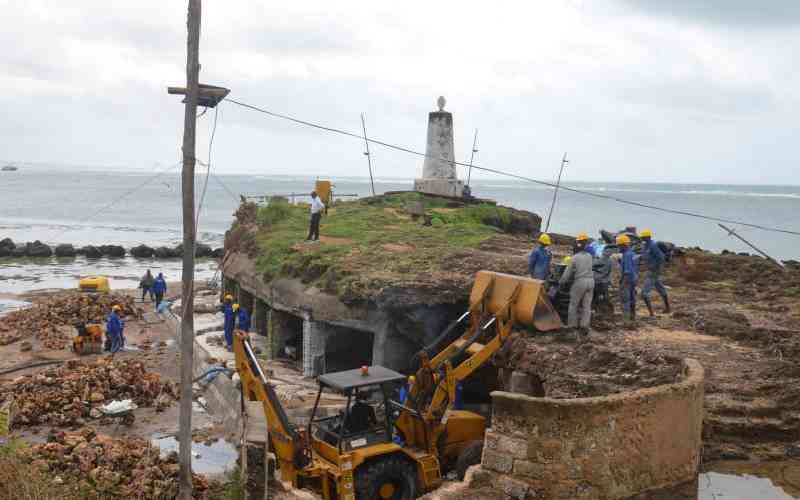Two-thirds of the earth comprises of water, an enormous mass that gives the seas ability to trigger international instability since it provides economic opportunities. This is referred to as the blue sea economy. Over the years, countries have realised and continue to exploit opportunities in deep-sea mining, deep-sea fishing, oil exploration, transportation of goods, military surveillance among others.
Kenya – Somalia relations is at its lowest following the dispute over the maritime boundary in the Indian Ocean. This has been sparked by Somalia’s auctioning of the oil blocks in the disputed Indian Ocean boundary. Moreover, Somalia has presented the dispute to the International Court Justice (ICJ), which is due for hearing from September 9 to 15. Maritime disputes are often controversial and delicate. The disputes mainly surround the jurisdictional limits of the coastal states and territorial sovereignty within the confines of interpretation of the law of the seas.
The establishment of the law of the seas was the realisation of the potential of the high seas to trigger an imbalance on global peace. The law of the sea segments the sea into maritime zones and specifies the rights, duties as well as the limits in each of the zones. These zones include; the territorial sea, the contiguous zone, the exclusive economic zone, and the continental shelf. In spite of the existence of the law of the seas and all the other customary international laws that govern the ocean as well as maritime delimitation, maritime disputes still arise specifically because maritime zones of two neighbouring states more often meet or overlap, and the line of separation has to be drawn to distinguish the right and obligations between the states. This overlap brings to question the appropriate method of maritime delimitation which better achieves the United Nation’s aspirations for peace and security.
The Kenya-Somalia maritime dispute is a case that brings to question the appropriate methods for maritime delimitation. While some of the principle methods that can be used to resolve this dispute exist namely, equidistance line, parallel line, and perpendicular line, proportionality and among others. The dispute has currently been deepened by the fact that Kenya and Somalia differ on the principle that should be used for delimitation. But the question that come to mind is the ability for a judicial process to effectively solve such scale of disputes.
Looking at the history of Kenya and Somalia in terms of Kenya’s involvement in Somalia peace process as well as the fight against Al Shabaab, the presence of Somali people in Kenya, the consequences of this boundary dispute complicate the already complex and volatile region’s peace and security, the fact that there are external actors fueling the escalation of the dispute for selfish gains of exploiting the deep sea mining, fishing and oil exploration. These are extremely delicate issues that may not be holistically resolved through a judicial process. It’s high time the ICJ referred this dispute to other non-judicial dispute resolution mechanisms that will provide a long term win-win resolution. Some of these options include;
First, further diplomatic negotiations; the two countries should overlook the current dispute being fueled by external actors for selfish gains, reflect deep into their long standing diplomatic relations that enhance cross border peace as well as regional stability and take leadership to engage much more intensely, honestly diplomatically to discuss the issues.
Second, the African Union Peace and Security Council, in the spirit of brotherhood, non-external interference and African solutions for African problems should pronounce herself in the matter and negotiate for a more African oriented solution. The African Union can do this through a mediation process.
Third, the United Nations Security Council having already pronounced herself on this matter and emphasized its urgency and the need to expedite the dispute resolution could also consider mediation as a way of ensuring the dispute does not complicate the region’s peace.
If all the options above can't work and the cases have to go through a judicial process then the court should in good faith engage widely on the issues highlighted above so as to understand the opposing view and respect each other’s interests with a view of taking a position that will influence a ruling that is equitable, agreeable, futuristic and that de-escalates the tension between the two countries while strengthening the good relationship between not only the two neighbouring states but also the region and the whole of the states within the Indian Ocean ream.
- Dr Churchill Saoke is an expert on governance, politics, international relations and is the Director for Alumni and International Students’ Office in JKUAT. [email protected]
 The Standard Group Plc is a
multi-media organization with investments in media platforms spanning newspaper
print operations, television, radio broadcasting, digital and online services. The
Standard Group is recognized as a leading multi-media house in Kenya with a key
influence in matters of national and international interest.
The Standard Group Plc is a
multi-media organization with investments in media platforms spanning newspaper
print operations, television, radio broadcasting, digital and online services. The
Standard Group is recognized as a leading multi-media house in Kenya with a key
influence in matters of national and international interest.
 The Standard Group Plc is a
multi-media organization with investments in media platforms spanning newspaper
print operations, television, radio broadcasting, digital and online services. The
Standard Group is recognized as a leading multi-media house in Kenya with a key
influence in matters of national and international interest.
The Standard Group Plc is a
multi-media organization with investments in media platforms spanning newspaper
print operations, television, radio broadcasting, digital and online services. The
Standard Group is recognized as a leading multi-media house in Kenya with a key
influence in matters of national and international interest.








